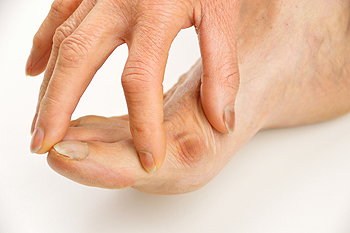Wearing Tight Shoes May Cause Bunions
Tuesday, 31 May 2022 00:00
A bunion is considered to be a deformity where a bony lump that forms on the side of the big toe. It happens as a result of the big toe becoming misaligned, and it can push against the side of the shoe. Many people develop a bunion from genetic reasons, or from wearing shoes that do not have adequate room for the toes to move freely in. High heels fit into this category, and it is suggested to wear a shoe that has a lower heel and a bigger toe area. Some people have an abnormal foot shape, and this may also lead to developing a bunion. There are specific symptoms that are associated with a bunion. These can include pain that gets worse when tight shoes are worn and the big toe may become stiff. Additionally, the skin surrounding the joints in the big toe may be swollen and red. Severe bunions may require surgery for permanent removal and proper alignment of the joints. If you have a bunion, please confer with a podiatrist who can guide you toward the treatment that is correct for you.
If you are suffering from bunion pain, contact Dawn Miles, DPM of Florida. Our doctor can provide the care you need to keep you pain-free and on your feet.
What Is a Bunion?
Bunions are painful bony bumps that usually develop on the inside of the foot at the joint of the big toe. As the deformity increases over time, it may become painful to walk and wear shoes. Women are more likely to exacerbate existing bunions since they often wear tight, narrow shoes that shift their toes together. Bunion pain can be relieved by wearing wider shoes with enough room for the toes.
Causes
- Genetics – some people inherit feet that are more prone to bunion development
- Inflammatory Conditions - rheumatoid arthritis and polio may cause bunion development
Symptoms
- Redness and inflammation
- Pain and tenderness
- Callus or corns on the bump
- Restricted motion in the big toe
In order to diagnose your bunion, your podiatrist may ask about your medical history, symptoms, and general health. Your doctor might also order an x-ray to take a closer look at your feet. Nonsurgical treatment options include orthotics, padding, icing, changes in footwear, and medication. If nonsurgical treatments don’t alleviate your bunion pain, surgery may be necessary.
If you have any questions, please feel free to contact one of our offices located in Palatka and Saint Augustine, FL . We offer the newest diagnostic and treatment technologies for all your foot care needs.









